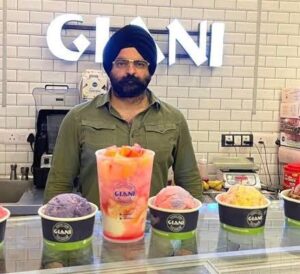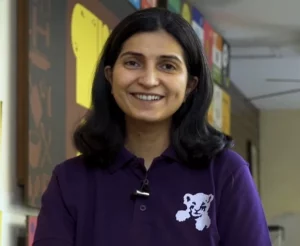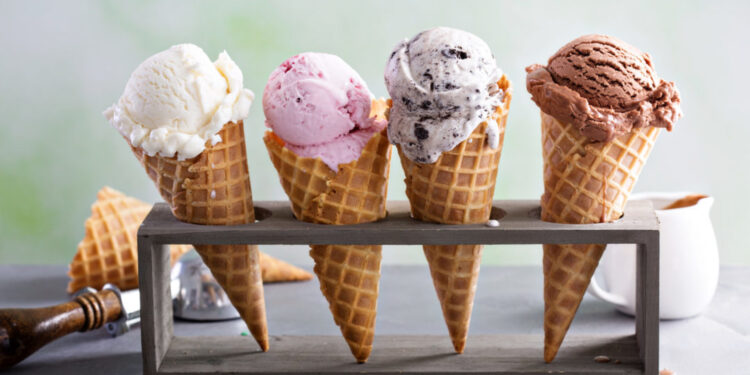-Nandini Bansal (cbedit@imaws.org)
Ice Cream has been an inseparable part of the Indian diet for decades. It is a dessert staple and is a very welcoming waft of coolness in the country’s sweltering months of summer. It, however, is equally popular in the winter months as well and therefore never goes out of vogue.
With this rich history and relationship with ice cream, India has come a long way. There are now many new and innovative styles of ice creams in the market, along with healthier options like vegan and sugar-free ice creams. Ice cream businesses share their inputs on these trends and practices in the market.
Changes in Customer Behavior

Mr. Rahul Khatri, the owner of Khatri Bandhu Ice Cream, shared on the changes in recent customer behavior, “Customers now prefer different types of ice creams and we have observed two main categories, ones who prefer decorative, more fancy ice creams and others who focus on the taste and the natural ingredients of the ice cream. The primary demand, however, is natural ingredients-based ice cream.”
Talking about the trends in the ice cream segment, Mr. Taranjeet Singh, Director, Giani Ice Cream Pvt Ltd, said, “In recent years, ice cream trends have shifted toward greater flavor variety and complexity, as well as the search for new textures that are fun, unique, and daring in order to dazzle consumers.
“Manufacturers have embarked on a quest to create the “perfect ice cream,” a goal that necessitates combining new flavors (while retaining popular classics like vanilla and chocolate) and experimenting with new and surprising textures. Not only that, but they had to choose ingredients for their formulations in a transparent, healthy, and ethical manner.”

Commenting on the same, Ms. Sonal, CEO of White Cub, added, “We have observed that customers are demanding more and more calorie-counted and healthy options which we at White Cub offer. The Pandemic also gave rise to demands for unconventional ice cream flavors like Matcha or Turmeric Latte flavored ice creams. People are also asking for value-added products like ice cream shakes which is a shift from the earlier demand for milkshakes.”
Taste v/s Health in the Indian Market

There has been a long conjecture of the food industry in India being ruled by taste. That anything can work as long as it serves the taste palettes of Indians and that healthier options have not been able to tap into the Indian market quite fully.
Commenting on the same, Rajiv Kaware, owner of Kaware Ice Cream, said, “Sugar-free and vegan are practically not the most feasible option as they can be expensive and unapproachable. When it comes to ‘fresh’ ingredients, it is very difficult to add natural or fresh fruits to ice creams as they end up turning into ice so we alternate it by adding the pulp of the fruits. India also has a higher demand for taste rather than health value. In big cities like Mumbai, the demand for sugar may be less but in cities like Pune, the demand for sugar is rather high.”
Presenting a different point of view, Ms. Sonal, added to this, “Ten years earlier no one could have imagined healthy options in ice cream but we have sold our ice creams even during the peak of the pandemic. We believe that Indian customers are ruled with a fine balance of taste and health, especially post-pandemic. Our flavors like the Swedish Delight which is a flavorful combination of healthy products like hazelnuts and cocoa powder have come about due to this shift in customer demand.”
Veganism in the Ice Cream Segment
Veganism as a lifestyle is extremely healthy not only for one’s own self but also for the environment as it stops deforestation and the emission of greenhouse gases. While more than 40% of India’s population is vegetarian there is still not a huge portion that practices veganism. This raises doubt about the penetration of vegan brands in the market.

Speaking about this, Ms. Sonal, went on, “We believe that the Indian market has accepted dairy-free and vegan products. While the country’s vegan base has not exponentially increased there has been a sharp rise, almost 25% year on year, in the number of flexitarians wanting to experiment with dairy-free and vegan options. Hence the vegan demands are rising thanks to people getting more open to change and experiment.”
New Trends in the Business
Ice creams are subject to a lot of new trends and experiments, especially since the advent of social media where these innovations turn into a viral rage.
Sharing their opinion on these trends, Mr. Kaware, said, “Trends in the ice cream business always come and go, for example, the nitrogen ice creams and the fusion ice creams where they put masala flavors in them. These types of concepts become famous for a short while but do not stick around for long. We believe that the traditional and natural flavors work the best with the Indian masses.”
To the same, Mr. Singh added, “Ice cream trends include the pairing of traditional flavors with exotic alternatives. Proposals such as chocolate, almond, and marshmallow ice cream could be mentioned here. New ice cream formulas strive for texture innovation, including crispy cookies, nuts, and crunchy nut cream. One of the most significant trends in ice cream manufacturing is the rise of new product developments (NPD) with the following formulations: a few natural and healthy ingredients with a low environmental and natural impact.”
Future of the Industry
While talking about the future of the Ice Cream Industry, Ms. Sonal commented, “The ice cream market in India is growing at a CAGR OF 11-13% year on year which is a very strong determinant of the promising growth of the ice cream segment. What can push the ice cream segment further in India is better logistics, better distribution facilities, and better infrastructure for handling the cold supply chain. If we achieve this the ice cream market can grow more than 30% every year.”
BEST WISHES FROM








